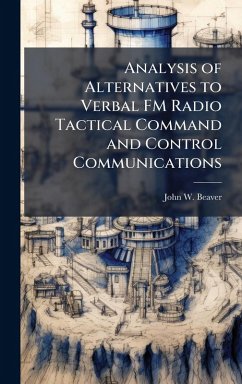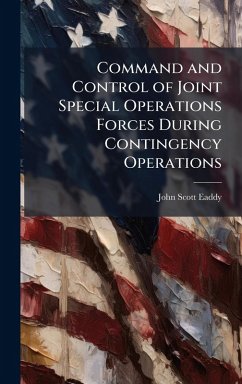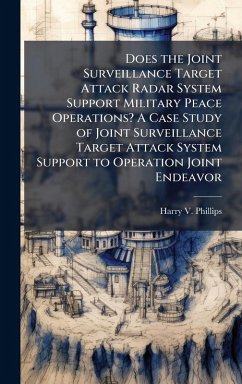
Command and Control of Distributed Intelligence, Surveillance and Reconnaissance Operations
Versandkostenfrei!
Versandfertig in über 4 Wochen
25,99 €
inkl. MwSt.
Weitere Ausgaben:

PAYBACK Punkte
13 °P sammeln!
Advances in technology have brought about many changes to the employment of Intelligence, Surveillance and Reconnaissance (ISR) systems of all types. The 2006 QDR states that the US Air Force will be organized "with emphasis on leveraging reach-back to minimize forward footprints and expedite force deployments, while reducing Air Force end strength by approximately 40,000 full-time equivalent personnel with balanced cuts across the Total Force."1 As technology continues to lead the US military into new and untested ways to collect information, many of the doctrinal underpinnings that have serv...
Advances in technology have brought about many changes to the employment of Intelligence, Surveillance and Reconnaissance (ISR) systems of all types. The 2006 QDR states that the US Air Force will be organized "with emphasis on leveraging reach-back to minimize forward footprints and expedite force deployments, while reducing Air Force end strength by approximately 40,000 full-time equivalent personnel with balanced cuts across the Total Force."1 As technology continues to lead the US military into new and untested ways to collect information, many of the doctrinal underpinnings that have served well since the time of Clausewitz require review and perhaps, modification, primarily in the areas of command and control and force apportionment. The goal of the Defense Community should be clear control and apportionment of weapon systems that rely on network-centric and distributed operations without losing the flexibility and efficiency inherent in their design. A hard look at doctrine and current tactics, techniques and procedures associated with these new systems will shed light on the most efficient design of future airborne ISR systems and the guidelines governing their apportionment and employment. This work has been selected by scholars as being culturally important, and is part of the knowledge base of civilization as we know it. This work was reproduced from the original artifact, and remains as true to the original work as possible. Therefore, you will see the original copyright references, library stamps (as most of these works have been housed in our most important libraries around the world), and other notations in the work. This work is in the public domain in the United States of America, and possibly other nations. Within the United States, you may freely copy and distribute this work, as no entity (individual or corporate) has a copyright on the body of the work. As a reproduction of a historical artifact, this work may contain missing or blurred pages, poor pictures, errant marks, etc. Scholars believe, and we concur, that this work is important enough to be preserved, reproduced, and made generally available to the public. We appreciate your support of the preservation process, and thank you for being an important part of keeping this knowledge alive and relevant.












